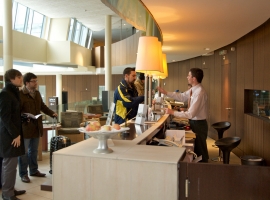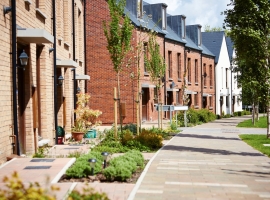
The twelve months to June 2018 saw a considerable rise in residential construction activity according to figures from the latest GeoView Residential Buildings Report, published by GeoDirectory today.
In total, 9,251 buildings were classified as being under construction, representing a 55% increase on June 2017 levels.
The majority of construction activity took place in urban areas, with the highest levels recorded in Dublin (34.9%), Cork (10.7%) and Meath (10.5%). Construction activity was particularly low in the counties of Leitrim (0.2%), Longford (0.3%) and Offaly (0.5%).
The report found that 19,680 residential addresses were added to the GeoDirectory database since June 2017. Over two-thirds of these dwellings are located in the Leinster region, with Dublin accounting for 39.8% of the overall total, highlighting an east/west divide in terms of new addresses.
On the other end of the scale, Longford and Leitrim were the only two counties to record fewer than 100 new residential addresses, registering only 66 and 87 new addresses respectively.
The average vacancy rate stands at 4.8%, a marginal drop of 0.1 percentage points on the same period last year. That said, 21 out of 26 counties experienced a decline in residential vacancy rates, with Longford registering the largest decline (-0.8 percentage points). Leitrim registered the highest residential vacancy rate in the country at 15.9%. Dublin, Kildare, Meath and Wicklow recorded the lowest percentages of vacant units in the country, at rates between 0.9 and 3.5%.
In total, 52,250 residential properties were purchased in the twelve months to April 2018, 19% of which were new properties. This compares favourably to the same period in 2017, when the figure for new dwellings stood at just 16.5%.
The report shows that 18,062 residential property transactions took place in Dublin, the highest in the country, while only 344 transactions were recorded in Monaghan. Meath recorded the highest proportion of new dwelling transactions at 37.8%, followed by Kildare (30.6%) and Wicklow (25.1%).
The national average price in the twelve months to April 2018 was €273,206. When Dublin is excluded, the national average falls to €198,906. Only three counties recorded property prices above the national average, namely Dublin (€413,891), Wicklow (€354,113) and Kildare (€281,675).
This highlights the demand for housing in the Greater Dublin Region, with the average property price in these three counties higher relative to the rest of the country. The county with the lowest average house price was Longford at €101,587, almost 50% below the national average price excluding Dublin.
In Dublin itself, Dublin 4 at €775,974 was the Dublin postal district with the highest average property price, followed by Dublin 6 at €750,549. Dublin 10 (€214,286) and Dublin 17 (€236,286) were the only Dublin postal districts with an average property price below €250,000.
Commenting on the findings of the report, CEO of GeoDirectory, Dara Keogh said, "The twelve months to June 2018 saw a significant increase in terms of residential construction activity. The report shows that the vast majority of this activity is taking place in Dublin and surrounding counties. However, despite this increase, house prices in urban and commuter counties continue to rise, showing us that demand is still outweighing supply by a great deal."
Source: www.businessworld.ie

















